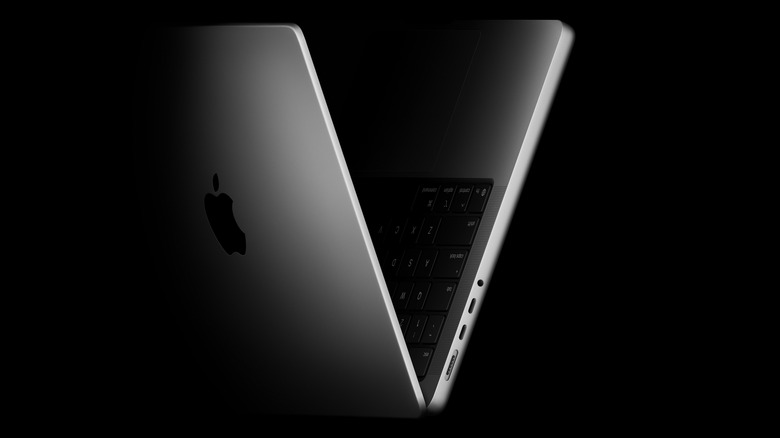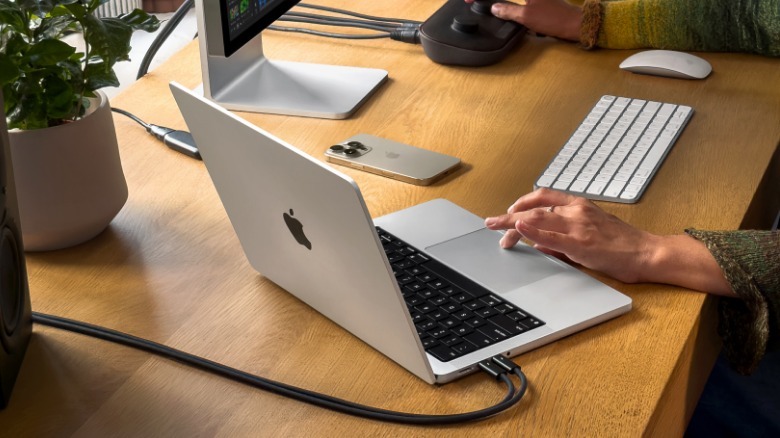With The MacBook Pro M5, It's Finally Time To Give Up Your Old M1 Laptop
Apple has just introduced its next-gen MacBook Pro, kickstarting the era of Macs powered by the new M5 silicon. The latest 14-inch MacBook draws power from the baseline M5 processor, though the more powerful Pro and Max versions should arrive in the coming months. Pre-orders for the machine are now live, while shipments kick off on September 22 in the U.S., starting at $1,599 for the base variant, which includes 16GB of RAM and 512GB of storage, but you can go all the way up to 4TB of internal storage for an additional $1,200.
Not much has changed externally. The design language remains identical to the M1 MacBook lineup launched back in 2021, but the gains in terms of raw firepower are pretty significant — you get a faster CPU and GPU, a souped-up neural engine to speed up AI-related chores, faster storage, and higher memory bandwidth. The more notable quality of life upgrade is the battery life. Compared to the 17-hour battery life that Apple advertised for the M1 generation, the M5-fueled 14-inch MacBook Pro climbs to 24 hours.
Just to give you a rough idea of how big the gulf is, between the M5 and its most recent Intel counterpart, Apple is touting a massive 86 times jump in AI performance and 30 times faster ray-tracing. Against the M1 model, you get 6.8 times faster rendering in Blender and 6 times faster AI workload execution. The rest of the hardware package is rounded off by a 12-megapixel front camera, a 14.2-inch 120Hz display (with optional nano texture upgrade), and a six-speaker assembly, while macOS Tahoe runs the show on the software side.
What are the benefits of switching to the M5 Pro?
Apple is heavily touting the gains offered by the M5 silicon against the silicon that started the whole shift away from Intel, the M1 chip. If you've been holding on to your trusty M1-powered MacBook and have been eyeing an upgrade ever since, you might want to consider this MacBook Pro refresh. If you use your Mac for creative tasks such as video editing or graphics rendering, the M5's onboard GPU will offer a six times jump in peak performance.
Apple is also claiming a similar boost for AI-focused tasks such as locally AI model deployment, but you must pick up a variant with plenty of RAM to reap the rewards without any memory bottlenecks. The updated shader cores also deliver a 2.5 times jump over the M1, while the third-generation ray-tracing engine also manages a 45% lead at ray-tracing workflows. So, whether it's 3D software or AAA games optimized for the Metal API, you are going to see more realistic light reflections, smoother performance, and quicker rendering. The benefits extend all the way to the memory modules.
The peak 153GB/s unified memory bandwidth of the M5 is double compared to what the M4 had to offer. The peak memory capacity has also been raised to 32GB, which should deliver a smoother multi-app workflow without bringing the machine to a halt. Aside from the expected boost to CPU and GPU-linked processes, Apple says the next-gen unified memory module also helps with "faster AI performance running models on the Neural Accelerators in the GPU or the Neural Engine."



